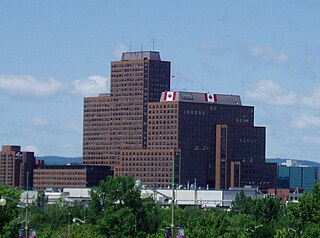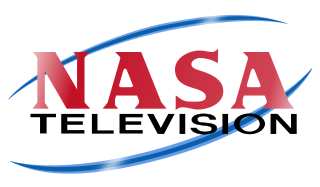
The Canadian Radio-television and Telecommunications Commission is a public organization in Canada with mandate as a regulatory agency for broadcasting and telecommunications. It was created in 1976 when it took over responsibility for regulating telecommunication carriers. Prior to 1976, it was known as the Canadian Radio and Television Commission, which was established in 1968 by the Parliament of Canada to replace the Board of Broadcast Governors. Its headquarters is located in the Central Building of Les Terrasses de la Chaudière in Gatineau, Quebec.

The media of Canada is highly autonomous, uncensored, diverse, and very regionalized. Canada has a well-developed media sector, but its cultural output—particularly in English films, television shows, and magazines—is often overshadowed by imports from the United States. As a result, the preservation of a distinctly Canadian culture is supported by federal government programs, laws, and institutions such as the Canadian Broadcasting Corporation (CBC), the National Film Board of Canada (NFB), and the Canadian Radio-television and Telecommunications Commission (CRTC).

Citytv is a Canadian television network owned by the Rogers Sports & Media subsidiary of Rogers Communications. The network consists of six owned-and-operated (O&O) television stations located in the metropolitan areas of Toronto, Montreal, Winnipeg, Calgary, Edmonton, and Vancouver, a cable-only service that serves the province of Saskatchewan, and three independently owned affiliates serving smaller cities in Alberta and British Columbia.
TVA is a Canadian French-language terrestrial television network, owned by Groupe TVA, a publicly traded subsidiary of Quebecor Media.

CJON-DT, branded on-air as NTV, is an independent television station in St. John's, Newfoundland and Labrador, Canada, owned by Newfoundland Broadcasting Company Ltd. The station's studios are located on Logy Bay Road in St. John's, and its transmitter is located in the city's Shea Heights section.

Bell Media Inc. is a Canadian media conglomerate that is the mass media subsidiary of BCE Inc.. Its operations include national television broadcasting and production, radio broadcasting, digital media and Internet properties.

CHCH-DT is an independent television station in Hamilton, Ontario, Canada. Owned by Channel Zero, the station maintains studios on Innovation Drive in the west end of Hamilton; prior to 2021, it was located near the corner of Jackson and Caroline streets in downtown Hamilton for nearly 65 years. The station has additional offices at the Marriott on the Falls in Niagara Falls, Ontario. Its old transmitter was located on First Road West in the former city of Stoney Creek; it was demolished in March 2024 and replaced with a new transmitter located on Highway 5 near Millgrove Side Road in Dundas, Ontario, which started transmitting in November 2023.
CTV 2 Atlantic is a Canadian cable television channel serving Atlantic Canada owned by Bell Media, with its studios located in Halifax, Nova Scotia. Owned by the Bell Media subsidiary of BCE Inc., it operates as a de facto owned-and-operated station of its secondary CTV 2 television system.
In cable television, governments apply a must-carry regulation stating that locally licensed television stations must be carried on a cable provider's system.
CBC Television is a Canadian English-language broadcast television network owned by the Canadian Broadcasting Corporation, the national public broadcaster. The network began operations on September 6, 1952, with its main studios at the Canadian Broadcasting Centre in Toronto. Its French-language counterpart is Ici Radio-Canada Télé.
CJBN-TV, VHF analogue channel 13, was a Global-affiliated television station licensed to Kenora, Ontario, Canada. The station was owned by Shaw Communications under its cable systems unit, and was not part of the Shaw Media unit which was sold to Corus Entertainment in 2016. CJBN's studios were based alongside Shaw's local offices on 10th and Front Streets in Keewatin, and its transmitter was located near Norman Dam Road in Kenora. The station was carried on Shaw Cable channel 12, Bell Satellite TV channel 224 and Shaw Direct channel 320.

Television in Canada officially began with the sign-on of the nation's first television stations in Montreal and Toronto in 1952. As with most media in Canada, the television industry, and the television programming available in that country, are strongly influenced by media in the United States, perhaps to an extent not seen in any other major industrialized nation. As a result, the government institutes quotas for "Canadian content". Nonetheless, new content is often aimed at a broader North American audience, although the similarities may be less pronounced in the predominantly French-language province of Quebec.
Community television in Canada is a form of media that carries programming of local community interest produced by a cable television company and by independent community groups and distributed by a local cable company.
In broadcasting, digital subchannels are a method of transmitting more than one independent program stream simultaneously from the same digital radio or television station on the same radio frequency channel. This is done by using data compression techniques to reduce the size of each individual program stream, and multiplexing to combine them into a single signal. The practice is sometimes called "multicasting".
Canada is served by various multichannel television services, including cable television systems, two direct-broadcast satellite providers, and various other wireline IPTV and wireless MMDS video providers.
In 2007, significant ownership changes occurred in Canada's broadcast television industry, involving nearly every private English-language network and television system. In addition to the shuffling of network affiliations and mergers involving various networks, several new television stations and rebroadcast transmitters also signed on the air.
Community television is a form of mass media in which a television station is owned, operated or programmed by a community group to provide television programs of local interest known as local programming.
Fee-for-carriage, value-for-signal, negotiation for value, or the "TV tax" all refer to a proposed Canadian television regulatory policy which would require cable and satellite television companies to compensate conventional, over-the-air television stations for the right to carry their local signals. Such a system has long existed in the United States, under the name of retransmission consent.

NASA TV was the television service of the National Aeronautics and Space Administration (NASA). It is broadcast by satellite with a simulcast over the Internet. Local cable television providers across the United States and amateur television repeaters may carry NASA TV at their own discretion, as NASA-created content is considered a work of the U.S. government and is within the public domain. NASA TV was also available via various cable, satellite, and over-the-top media services worldwide. The network was formally created in the early 1980s to provide NASA managers and engineers with real-time video of missions. NASA has operated a television service since the beginning of the space program for archival purposes, and to provide media outlets with video footage.
The first incarnation of E!, also referred to as E! Entertainment Television, was a Canadian English language privately owned television system that existed from 2001 to 2009 under the ownership of Canwest. At its peak it consisted of eight local television stations located in Quebec, Ontario, Alberta and British Columbia, including five stations owned and operated (O&O) by Canwest and three affiliates owned by Jim Pattison Group.





